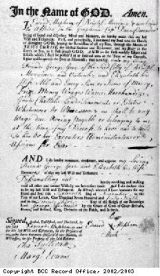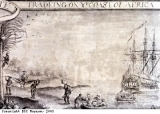The slaves ships crew
There were some 2,000 sailors who lived in Bristol by the 1750s. Of these, only the most desperate worked on slave ships. This was because illness, terrible heat and the threat of slave rebellions made the trip to Africa hard. Sailors tried to avoid joining a slaving voyage. Thomas Clarkson campaigned against the slave trade. In order to understand more about the slave trade and those who took part in it, he came to Bristol in 1787. He spoke to many sailors to get an idea of the horrors they went through on the trip to Africa and the Caribbean on slaving voyages. Later Clarkson wrote that ‘Men on their first [slaving] voyages usually dislike the traffic; … but if they went a second or third time, their disposition became … accustomed to carry away men and women by force …’. Clarkson meant that sailors on their first slaving voyage might not have liked the job of taking slaves, but by the second or third voyage they were used to it.
By the 1780s many sailors were recruited from the rough drinking taverns on Marsh Street, in Bristol. They were often taken by trickery by the ships captains who were looking for crew to man their slaving ships. This was one of the few ways that the captains could get sailors. The captains would pay pub landlords to help them trick men into joining the slaving voyages. Pub landlords would lend money to sailors so that they could afford to buy drinks. Once the sailor was drunk, the bill was given to them, and the sailor would be unable to pay it or repay the loan from the landlord. The corrupt landlord would then give them a choice. Either the sailor would go to jail, or, to repay the debt, could join the crew of a slaving ship bound for Africa. Most sailors would choose the second option rather than go to jail. The landlords would be paid for their help and so recover their money that way. The sailors would pay the debt from their wages for the voyage.
Groups of merchants, or traders, owned the slave ships. They would then employ the captain and the crew. Sometimes slave ship captains owned a share in the slave ship with the merchants. The captain and crew all received a wage. But the higher ranking members, such as the captain, the ship’s surgeon and the first mate (the captain’s assistant), would also be given a ‘a privilege negroe’ . This was a a slave bought in Africa, which they could sell for their own profit. It was a bonus to encourage them to look after the slaves well.
Occasionally sailors found themselves in the position of slaves themselves. In the early 1700s an English ship was captured off the coast of North Africa by pirates from Morocco (known as Barbary pirates, from the name given to the North African coast). They were taken as slaves by the pirates who demanded a ransom to free them. European sailors were often captured like this. Often they were freed by friends who paid the ransom money. Some would be sold as slaves, though, if they had no friends able to raise the money.




